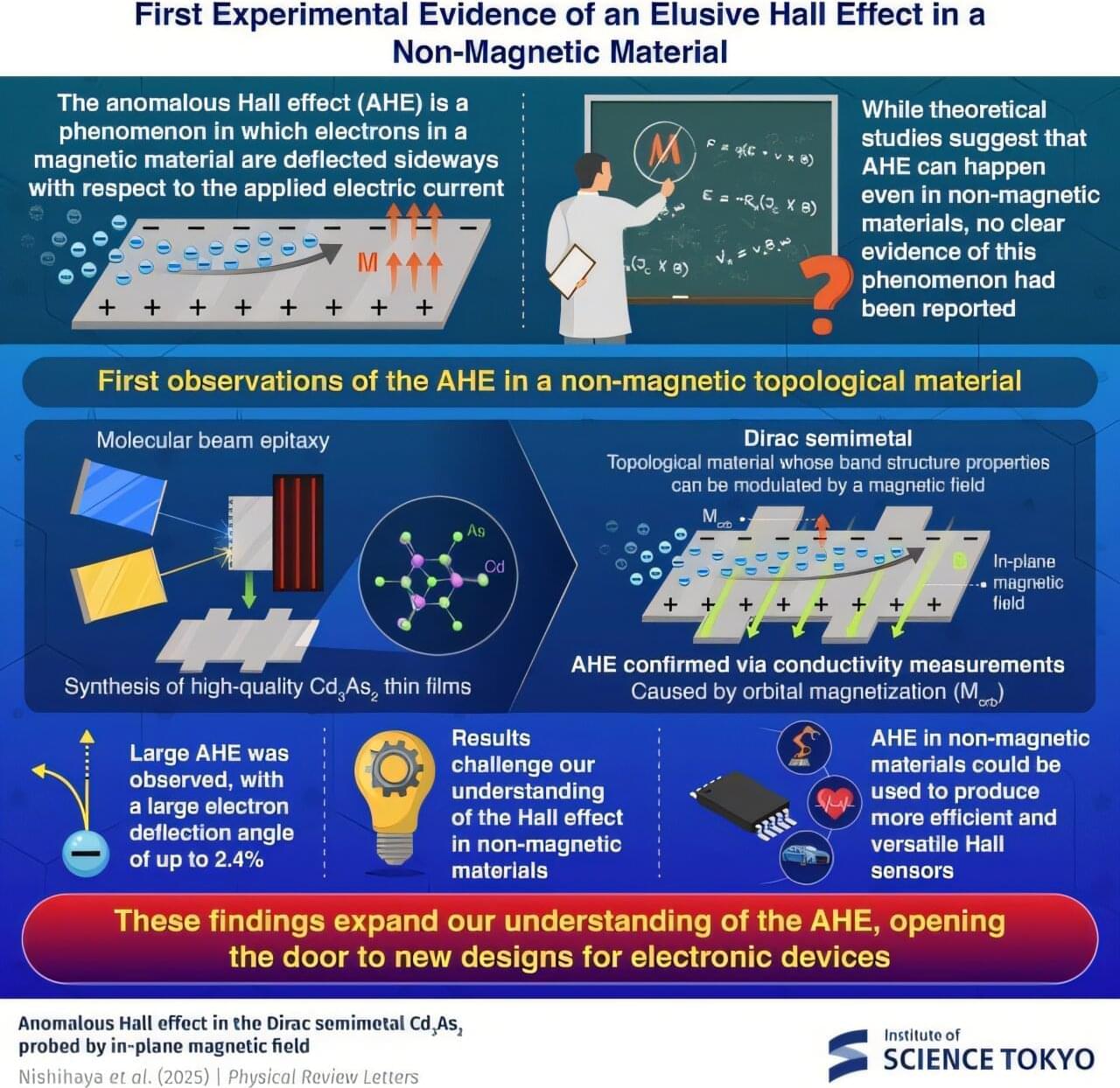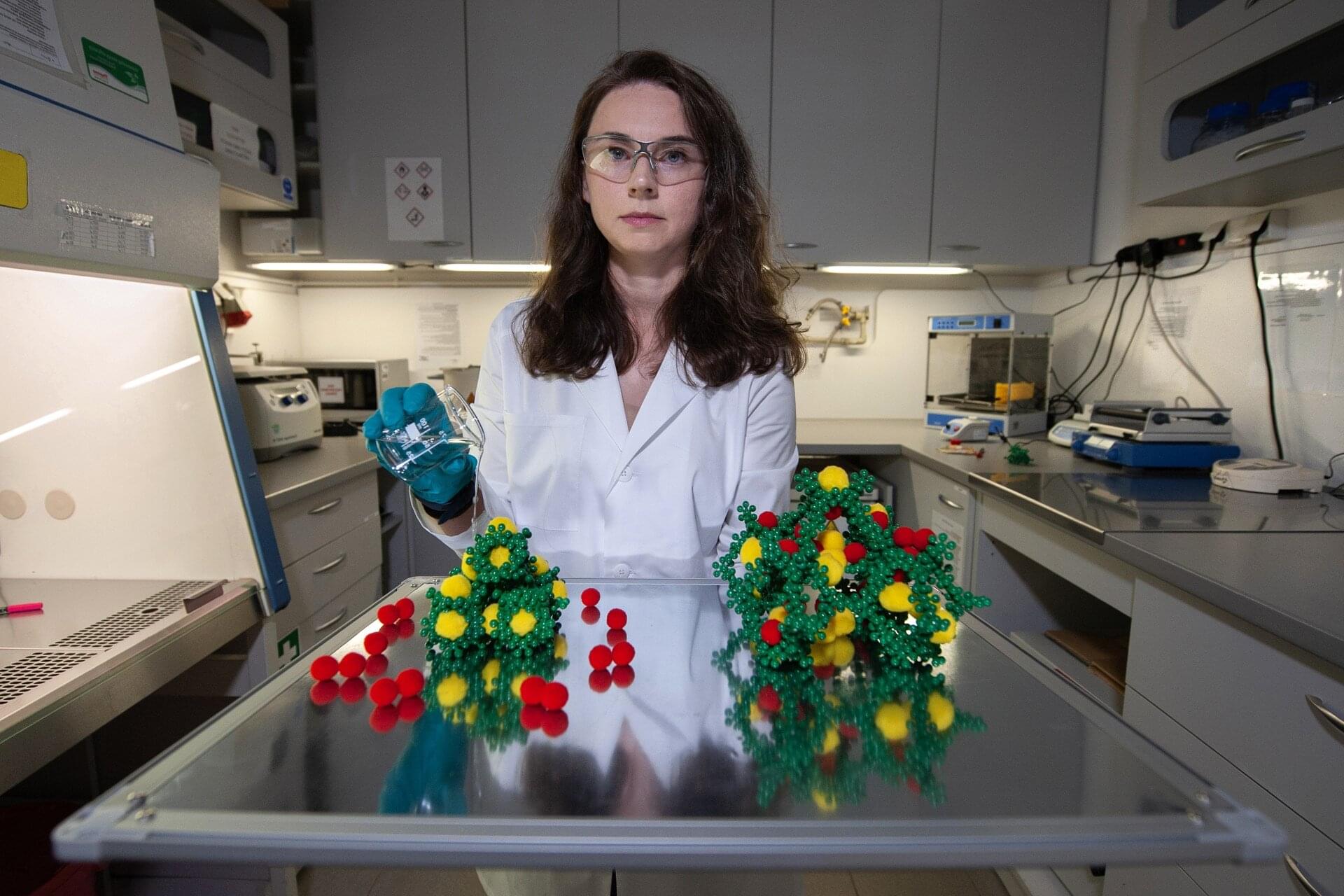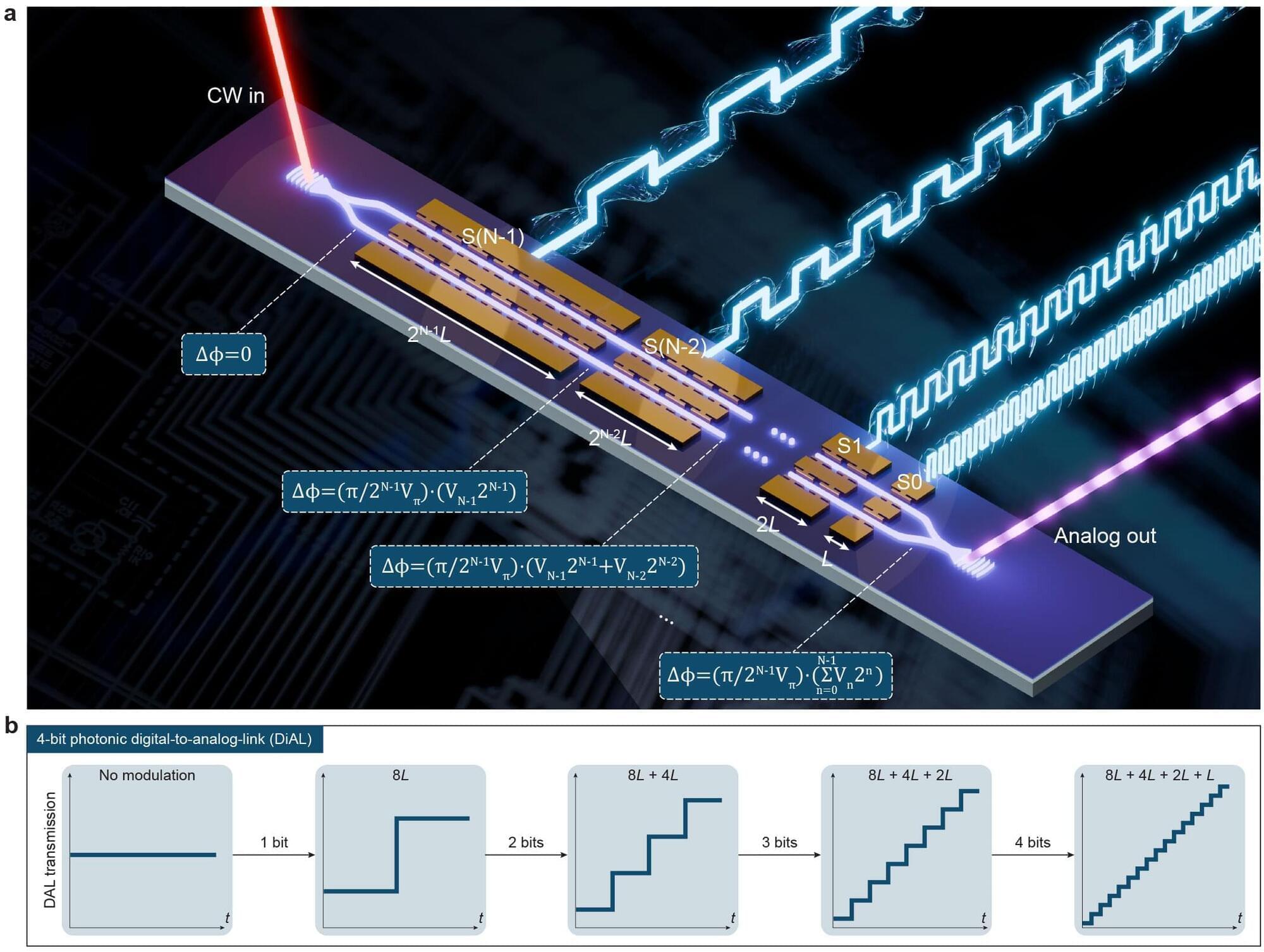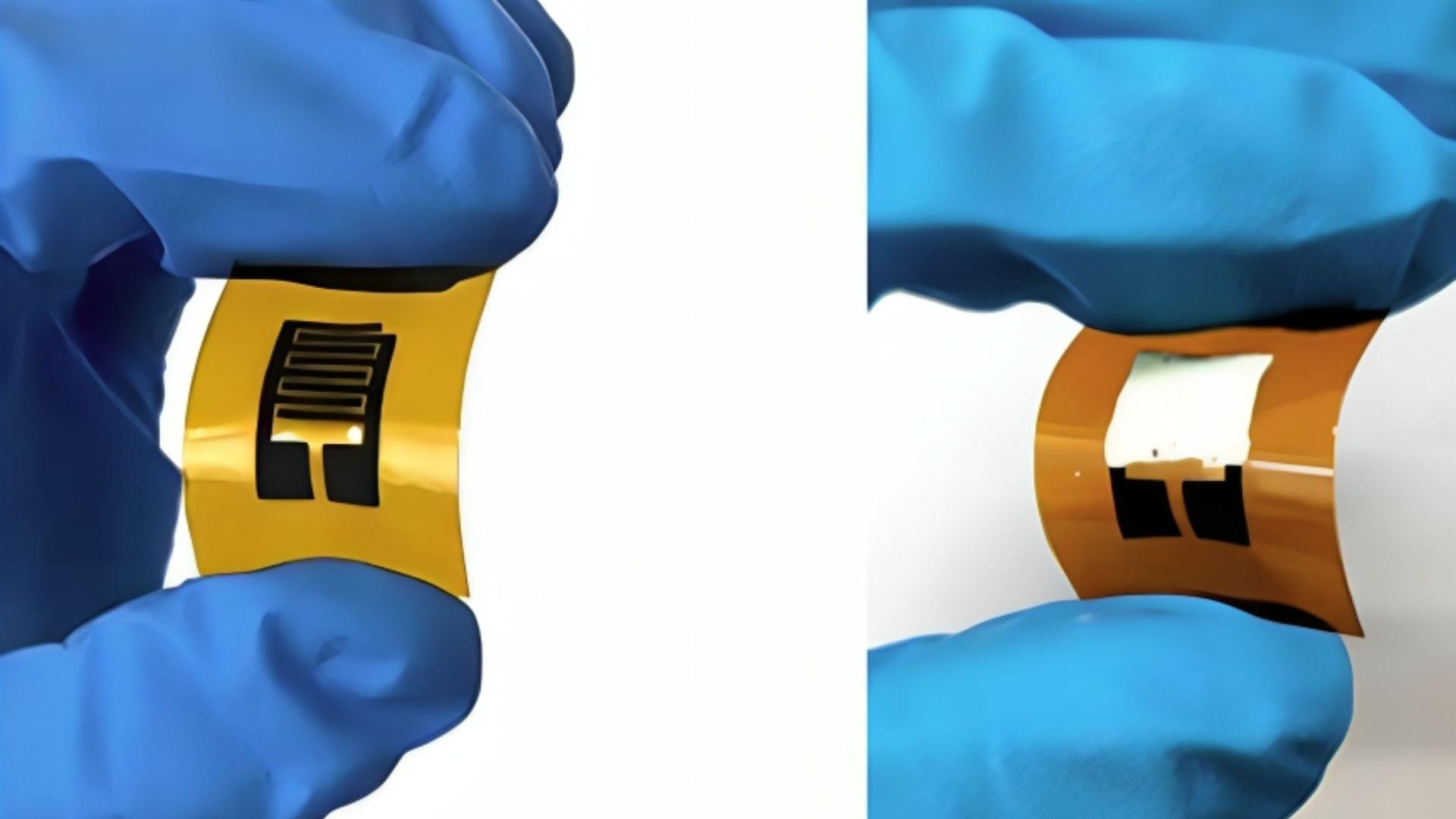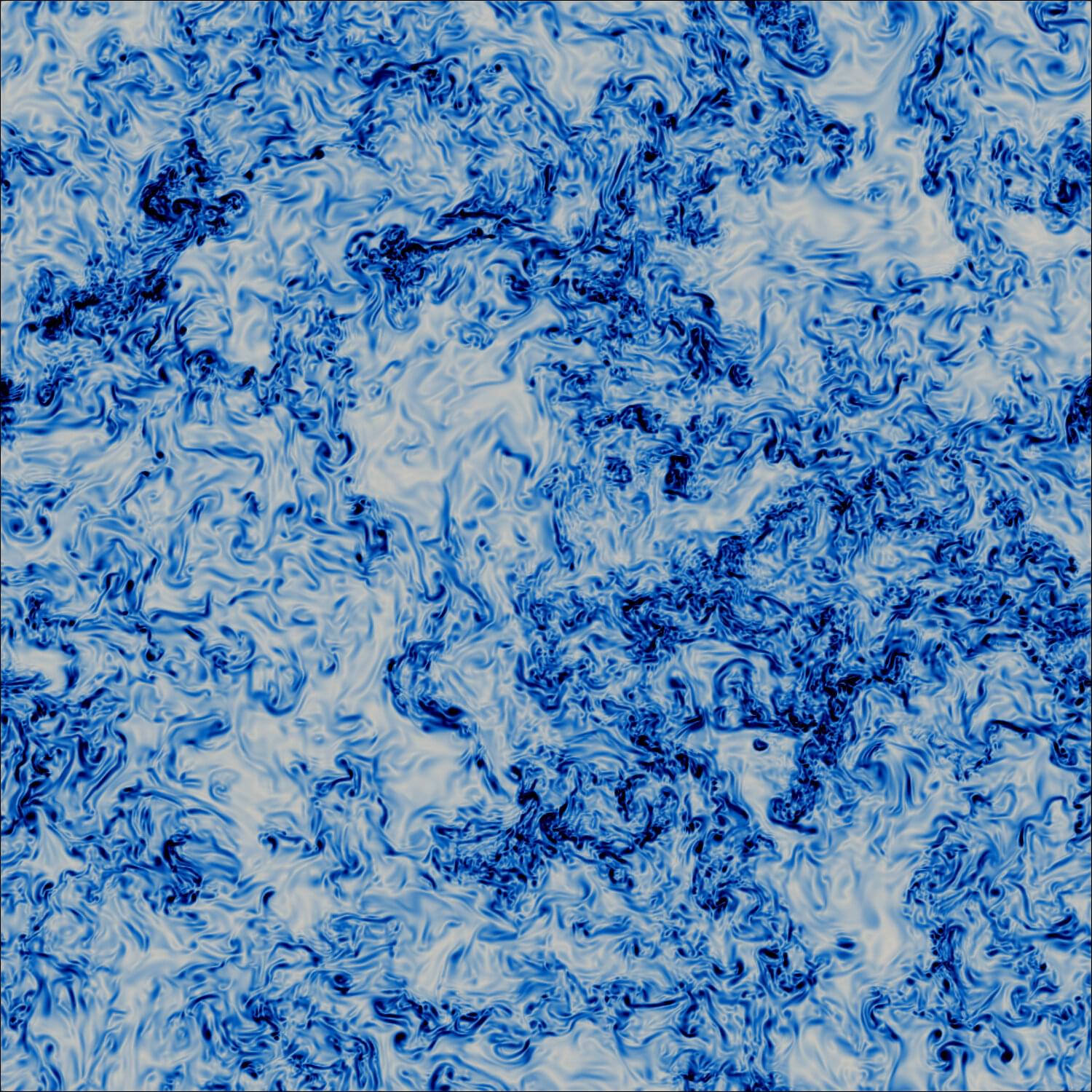A giant anomalous Hall effect (AHE) has been observed in a nonmagnetic material for the first time, as reported by researchers from Japan. This surprising result was achieved using high-quality Cd3As2 thin films, a Dirac semimetal, under an in-plane magnetic field. By modulating the material’s band structure, the team isolated the AHE and traced its origin to orbital magnetization rather than spin, challenging long-held assumptions in condensed matter physics.
In 1879, American physicist Edwin Hall discovered that a voltage develops across a conductor when it carries an electric current in a magnetic field, caused by the sideways deflection of moving charges. This phenomenon, which later became known as the Hall effect, quickly became a hot topic in the field and led to notable advances in the theoretical, experimental, and practical realms alike. Soon after the initial discovery of the Hall effect, scientists noticed that magnetic materials exhibited a similar phenomenon—this was coined the anomalous Hall effect (AHE).
Much more puzzling than the ordinary Hall effect, the AHE has stirred up debate among physicists for decades regarding the true nature of its origin. Some theoretical predictions have even hinted that AHE may be possible even in nonmagnetic materials. However, experimental confirmation of these predictions had never been achieved—until now.
